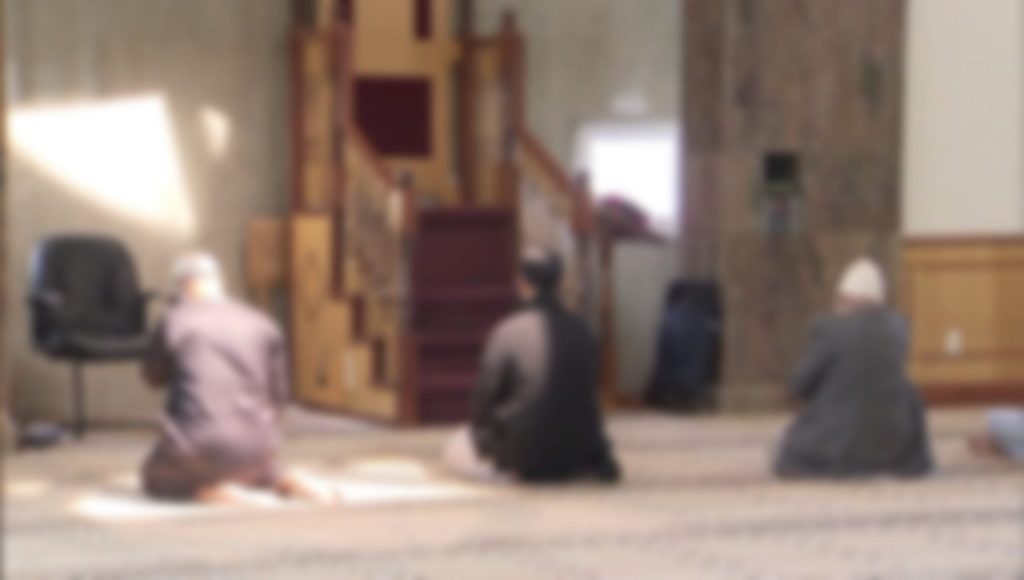Anti-Islamophobia campaign aims to educate Canadians as discrimination grows

One in four Canadians “do not trust people belonging to the Muslim faith group,” according to a survey conducted by the Sharing Halal campaign, which hopes to educate and address Islamophobia.
Sarah Khetty spearheads Sharing Halal, and she hopes sparking conversation on Islamophobia will give Muslim Canadians a chance to address discrimination they have faced.
The survey, conducted by Zahiba Halal as part of the Sharing Halal campaign, found one in three Canadians are concerned with the number of Muslim immigrants entering Canada, while 27 per cent say hijabs should be banned.
Advertisement
“These findings identify a significant opportunity to enhance understanding and compassion for the Muslim community in Canada,” Khetty says.
Hasan Alam is the community liaison for the Islamophobia Legal Assistance Hotline and says although the survey is disheartening, he unfortunately is not surprised.
“Well, I think it stems from Canada’s history of white supremacy, it’s not just the Muslim community that faces racism in the form of Islamophobia historically, communities of color have always faced prejudice and discrimination in Canada, starting with the Indigenous stewards of these lands right from the very creation of Canada,” Alam said.
Related stories:
-
Vancouver won’t send $10K to support legal case against Quebec’s Bill 21
-
How the Quebec City mosque stepped up security to prevent another tragic attack
-
Surge of hate during pandemic to be investigated by B.C. Human Rights Commission
Advertisement
On June 6, 2021, a Muslim Canadian family in London, Ontario was out for a Sunday stroll when they were run down on a sidewalk. A grandmother, father, mother and teenage daughter were killed and a boy seriously injured. Khetty says this is one of many instances where Muslim Canadians are targeted purely based on their faith, and it needs to change.
“As Canadians, we should be really proud of our desire to be a diverse country. And if that’s something that we want to continue to stand for, one of the things that we need to do is be a little bit less polite or very shy as Canadians to ask questions. We’re afraid of being discriminatory or racist. But I think if you’re coming at things with curiosity, instead of judgment, people can sense that you’re coming from a place of wanting to learn and educate yourself or if you’re coming from a place of judgment.”
As for Golnar Elgammal, she wears a hijab, and says finding out nearly 30 per cent are disapproving of her religious attire is very frustrating.
“For me [the hijab] is a beautiful thing. It’s a part of my religion. It’s a way that I can express my religion. To be very honest it kind of keeps me in check because when I’m driving and I’m getting that road rage, I’m not gonna stick my finger out the window because I know that when somebody looks at me, that first thing they see is a Muslim,” Elgammal told CityNews.
One common concern among Khetty, Alam, and Elgammal is that they say many people perceive Muslims as “extremists.” They say calling people who practice Islam extremists perpetuates hate and prevents non-Muslims from truly understanding, and humanizing Muslims.
Advertisement
“I think the fact that Muslims are always propped up as being extremists, as being the bad apples in society fuels the sentiments that we’re seeing in this survey. It’s a reflection of the fact that people have a real sort of cognitive dissonance with the reality of Canada. When you look at the majority of violent acts of terror, that have taken place domestically within Canada, they’ve been carried out by white radicalized males. The Quebec mosque shooting, the London attack, all of these were done by young white males,” Alam said.
As of this year, Statistics Canada says there are just over one million Muslims living in Canada, and Khetty says there is an urgency for non-Muslim Canadians to learn more about Muslim people, and drop the misconceptions.
“What we’re trying to do is create conversation between Canadian Muslims and Canadian non-Muslims. The one on one is the best way to deal with these things. If you speak to any Canadian Muslim, and ask them some questions about their experiences with Islamophobia, I can guarantee you that everyone has a story.”
